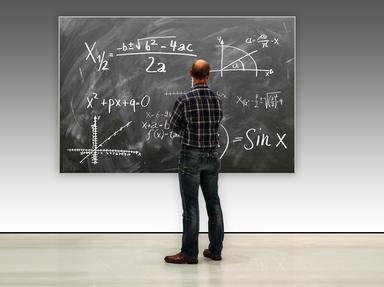Quiz Answer Key and Fun Facts
1. The equation PV=nRT shows the relationship between a variety of gas properties. What is this equation called?
2. In the equation PV=nRT what value does the "R" always have if the pressure is measured in Atmospheres and the temperature measured in Kelvin?
3. Boyle's law relates the way two gas properties change when another property remains the same. What are the two changing properties in Boyle's law?
4. Charles's Law is also known by which name?
5. Dalton's Law of Partial Pressure can best be shown by an equation by:
(P-1 is the pressure of the first gas)
6. Gay-Lussac's Law relates which of the following gas properties?
7. A container is originally at 5 Kelvin and 10 ATM. If the temperature is raised to 10 Kelvin, what will be the new pressure of the container?
8. 2.02 grams of hydrogen gas is put in a container. Fill in the blank in the equation: PV=_RT with the correct number.
9. A solution is at 27 degrees Celsius. If the solution was placed in a freezer able to freeze it down to 100 degrees Kelvin, what would be the change in temperature?
10. The combined gas law is shown in the equation:
P1 x V1 / T1 = P2 x V2 / T2
What must remain constant for this to be true?
Source: Author
rgranger01
This quiz was reviewed by FunTrivia editor
crisw before going online.
Any errors found in FunTrivia content are routinely corrected through our feedback system.

